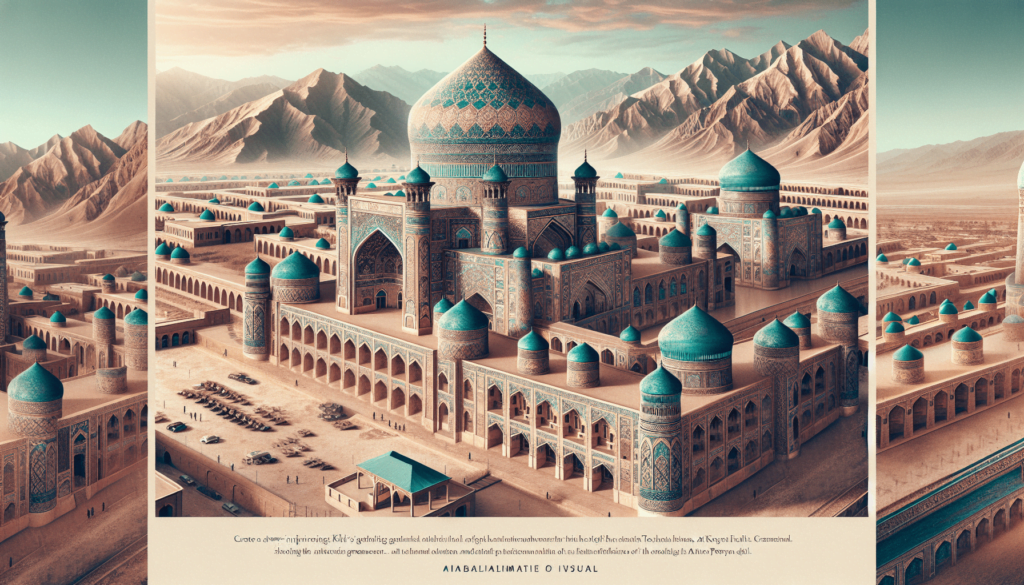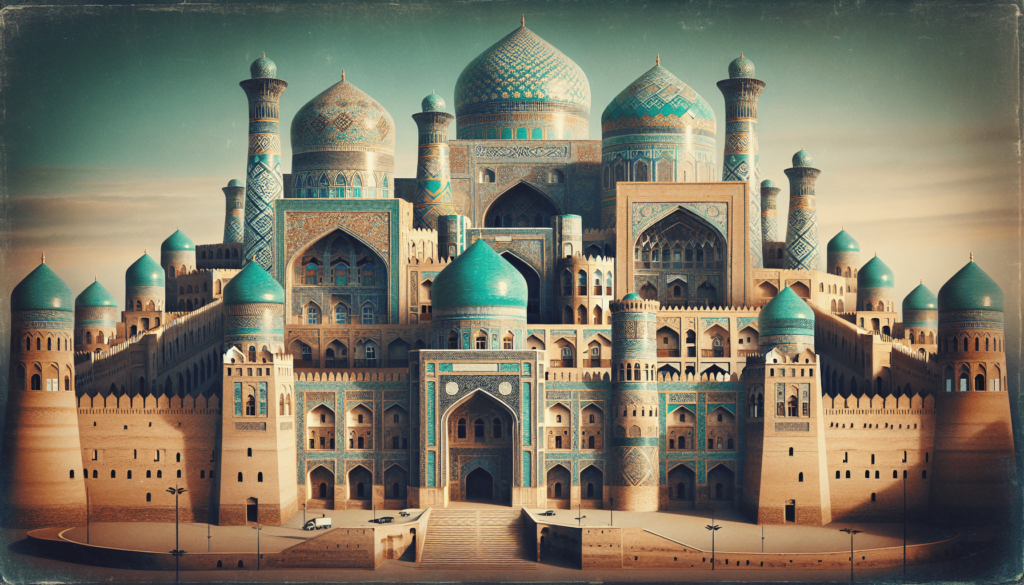Khiva, a hidden gem along the Silk Road in Uzbekistan, often goes under the radar of tourists who prefer to visit more well-known cities like Bukhara and Samarkand. However, this ancient city holds its own with its impressive architectural wonders. Itchan Kala, the walled fortress that encompasses Khiva, boasts over 60 cultural sites, including medieval mosques, lavish palaces, museums, and craft studios. Once a crucial trading post on the Silk Road, Khiva has been meticulously restored, earning the reputation of being a “living relic amidst the desert expanse.
” Here, visitors can truly immerse themselves in the city’s history, exploring landmarks such as the stunning Tosh Hauli stone palace and the impressive Kunya-Ark citadel. From repurposed madrasahs now housing craft workshops and souvenir markets to the slower pace of life that permeates the city, Khiva offers an unparalleled opportunity to intimately experience the rich heritage of Uzbekistan’s architectural marvels.
Table of Contents
Architectural Marvels of Khiva: Tosh Hauli and Kunya-Ark

Khiva: A Hidden Gem on the Silk Road
Overview of Khiva
Khiva, located in Uzbekistan, is a city that often goes unnoticed by tourists in comparison to its more famous counterparts, Bukhara and Samarkand. However, this hidden gem is well worth a visit for those seeking an authentic and immersive experience. Khiva, with its rich history and stunning architecture, offers a glimpse into the past and a unique opportunity to explore the Silk Road.
Comparison to Bukhara and Samarkand
While Bukhara and Samarkand may steal the spotlight, Khiva holds its own when it comes to historical significance and cultural attractions. What sets Khiva apart is its well-preserved walled fortress, known as Itchan Kala, which houses over 60 cultural sites including medieval mosques, opulent palaces, museums, and craft studios. This compact area allows visitors to easily explore the city’s main attractions without feeling overwhelmed by sheer size.
Importance as a Silk Road City
As a stop along the Silk Road, Khiva played a vital role in the trade and exchange of goods between East and West. Merchants and traders flocked to Khiva, making it a bustling hub of economic activity. The city’s strategic location brought prosperity and cultural diversity, leaving a lasting imprint on its architecture and traditions.
Description of Itchan Kala
Itchan Kala, the heart and soul of Khiva, is a UNESCO World Heritage Site. Enclosed within its walls, this ancient fortress is a captivating blend of turquoise domes, intricate tilework, and winding streets. Itchan Kala is a true testament to the city’s long and storied history, showcasing architectural marvels from various eras.
Restoration and Preservation Efforts
Recognizing the value of Khiva’s architectural heritage, extensive restoration and preservation efforts have been undertaken to maintain the city’s beauty and historical integrity. These efforts have transformed Khiva into a living relic amidst the desert expanse, allowing visitors to step back in time and witness the grandeur of a bygone era.
Intimate Exploration and Meaningful Interactions
One of the advantages of visiting Khiva is the more intimate exploration it offers compared to larger cities like Bukhara and Samarkand. Visitors can leisurely stroll through the narrow streets of Itchan Kala, taking their time to admire the intricate details of the mosques and palaces and delve into the city’s history. Additionally, Khiva provides opportunities for meaningful interactions with the local community, offering a glimpse into their daily lives and traditions.
Architectural Marvels: Tosh Hauli and Kunya-Ark
Introduction to Khiva’s Beautiful Architecture
Khiva’s architectural wonders are a sight to behold. The city boasts a collection of breathtaking structures that showcase the region’s rich artistic and cultural heritage. Two standout examples of Khiva’s architectural marvels are the Tosh Hauli Stone Palace and the Kunya-Ark Citadel.
Description of Tosh Hauli Stone Palace
Tosh Hauli, which means “Stone Courtyard,” is a magnificent palace located within the walls of Itchan Kala. Built in the early 19th century, this palatial complex served as the residence of Khiva’s rulers. Tosh Hauli’s remarkable stone facade, adorned with exquisite carvings and intricate patterns, is a testament to the skill and craftsmanship of the era.
Features and Design of Tosh Hauli
Tosh Hauli’s design is a fusion of local and Persian architectural styles, resulting in a unique and visually stunning structure. The palace consists of various courtyards, each with its own distinct character and purpose. Ornate halls, reception areas, living quarters, and private gardens are intricately interconnected, providing a glimpse of the opulence and grandeur that once graced these halls.
Significance of Tosh Hauli in Khiva’s History
Tosh Hauli holds immense historical significance as the residence of the Khivan khans, the ruling elite of the region. It was in these halls that crucial decisions were made, alliances were forged, and the culture and traditions of Khiva were shaped. Today, Tosh Hauli stands as a tangible link to the city’s past, offering visitors a chance to step into the world of Khivan royalty.
Exploring Tosh Hauli Today
Today, Tosh Hauli serves as a museum, inviting visitors to explore its opulent interiors and gain insight into the lives of the khans. The palace showcases a collection of artifacts and exhibits that shed light on Khiva’s rich history and cultural heritage. Exploring Tosh Hauli is like stepping into a bygone era, where every room tells a story and unveils the splendor of Khiva’s past.
Description of Kunya-Ark Citadel
Another iconic structure in Khiva is the Kunya-Ark Citadel, an imposing fortress that served as the residence of the rulers and a symbol of power. Standing tall within the walls of Itchan Kala, the citadel exemplifies the architectural brilliance of the region.
Features and Design of Kunya-Ark
The Kunya-Ark Citadel is a commanding structure, with its towering walls and ornate entrance gate. Within its fortifications lie a series of courtyards, halls, and buildings, each with its own distinct purpose. The citadel’s design reflects the defensive needs of the time, with strategic placement of its gates and towers.
Historical Significance of Kunya-Ark
The Kunya-Ark Citadel was not only a symbol of power but also a crucial center of governance and administration. It housed not only the living quarters of the rulers but also administrative offices, a mosque, and even a prison. The citadel was the beating heart of Khiva, where important decisions were made and the prosperity of the city was ensured.
Visiting Kunya-Ark: Highlights and Attractions
Today, visitors to Kunya-Ark can marvel at its architectural splendor while exploring its various sections. Highlights include the reception hall, where visitors can admire intricately carved wooden ceilings, and the jail, offering a glimpse into the harsh realities of the past. The panoramic views from the citadel’s walls provide a breathtaking panorama of Khiva, allowing visitors to fully appreciate the city’s beauty.
Repurposed Madrasahs: Craft Workshops and Souvenir Markets
Khiva’s architectural wonders are not limited to palaces and citadels alone. The city is also home to several former madrasahs, Islamic educational institutions, that have been repurposed into craft workshops and souvenir markets. These vibrant spaces offer a unique opportunity to witness traditional handicrafts being made and to purchase unique souvenirs directly from the artisans.

Khiva: A Slower Pace and Immersive Experience
Contrasting Atmosphere with Larger Towns
One of the striking differences between Khiva and larger towns like Bukhara and Samarkand is the overall atmosphere. While the larger towns can be bustling with tourists, Khiva offers a slower and calmer experience. The smaller size and fewer crowds allow visitors to truly immerse themselves in the city’s rich history and culture.
Opportunities for Slower Exploration
In Khiva, there is no rush to see everything in a limited amount of time. Visitors can take their time to wander through the narrow streets, absorb the intricate details of the architecture, and soak in the ambiance of the city. Khiva’s smaller scale allows for a more leisurely and immersive exploration, allowing travelers to discover hidden corners and treasures at their own pace.
Immersing Oneself in Khiva’s History
The well-preserved historical sites and authentic cultural experiences in Khiva enable visitors to truly immerse themselves in the city’s history. From exploring the ancient fortress to witnessing traditional craftsmanship, every step in Khiva is a step back in time. The city’s well-preserved heritage serves as a living museum, providing a unique opportunity to connect with the past.
Interacting with the Local Community
Khiva’s smaller size and slower pace create opportunities for meaningful interactions with the local community. Visitors can engage with the friendly locals and learn about their customs, traditions, and way of life. Whether it is sharing a cup of tea with a local artisan or participating in a traditional ceremony, these interactions add depth and richness to the travel experience.
Enjoying the Calm and Tranquility
Khiva’s more relaxed atmosphere allows visitors to escape the hustle and bustle of modern life and embrace a sense of calm and tranquility. The city’s narrow streets, adorned with historic buildings and shaded by ancient trees, provide a serene environment for contemplation and relaxation. It is the perfect place to unwind, recharge, and appreciate the simple pleasures of life.
Tips for a Memorable Visit to Khiva
To make the most of a visit to Khiva, it is advisable to allocate sufficient time to explore the city at a leisurely pace. Hiring a local guide can enhance the experience by providing valuable insights into Khiva’s history and culture. Additionally, taking the time to engage with the local community and participate in cultural activities can create lasting memories.
In conclusion, Khiva is a hidden gem on the Silk Road that offers a unique and immersive experience for travelers seeking an authentic glimpse into Uzbekistan’s rich history and culture. From the well-preserved architecture and vibrant markets to the slower pace and meaningful interactions, Khiva provides a truly memorable journey back in time. It is a destination that deserves to be discovered and appreciated by those seeking a deeper understanding of the Silk Road’s legacy.
Related site – Kunya-Ark Citadel, Khiva
